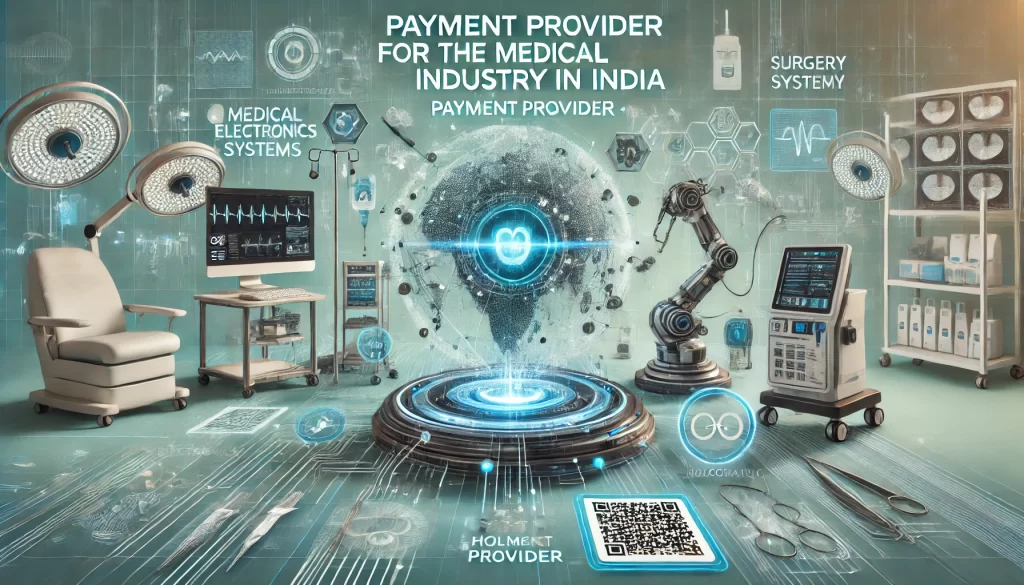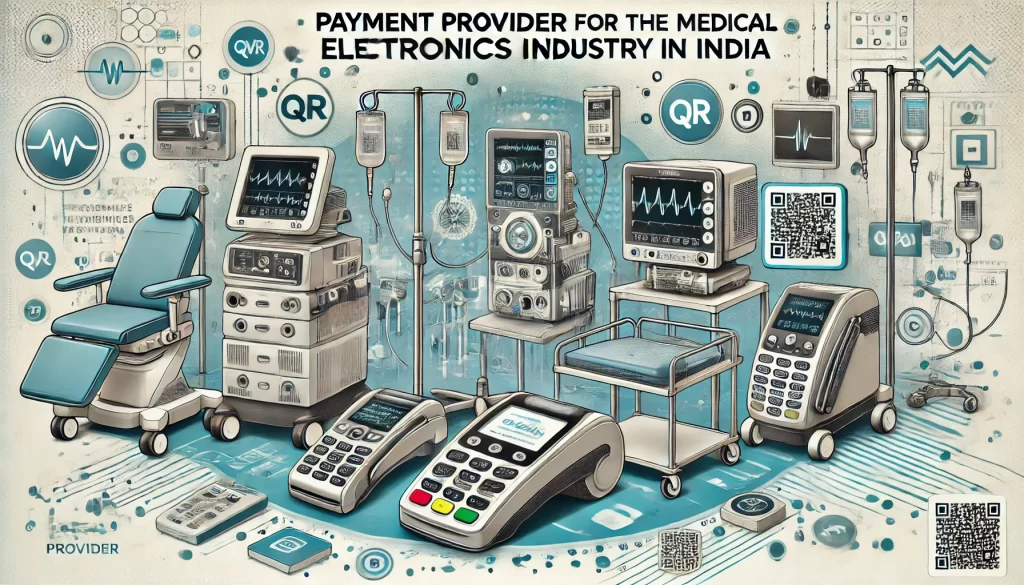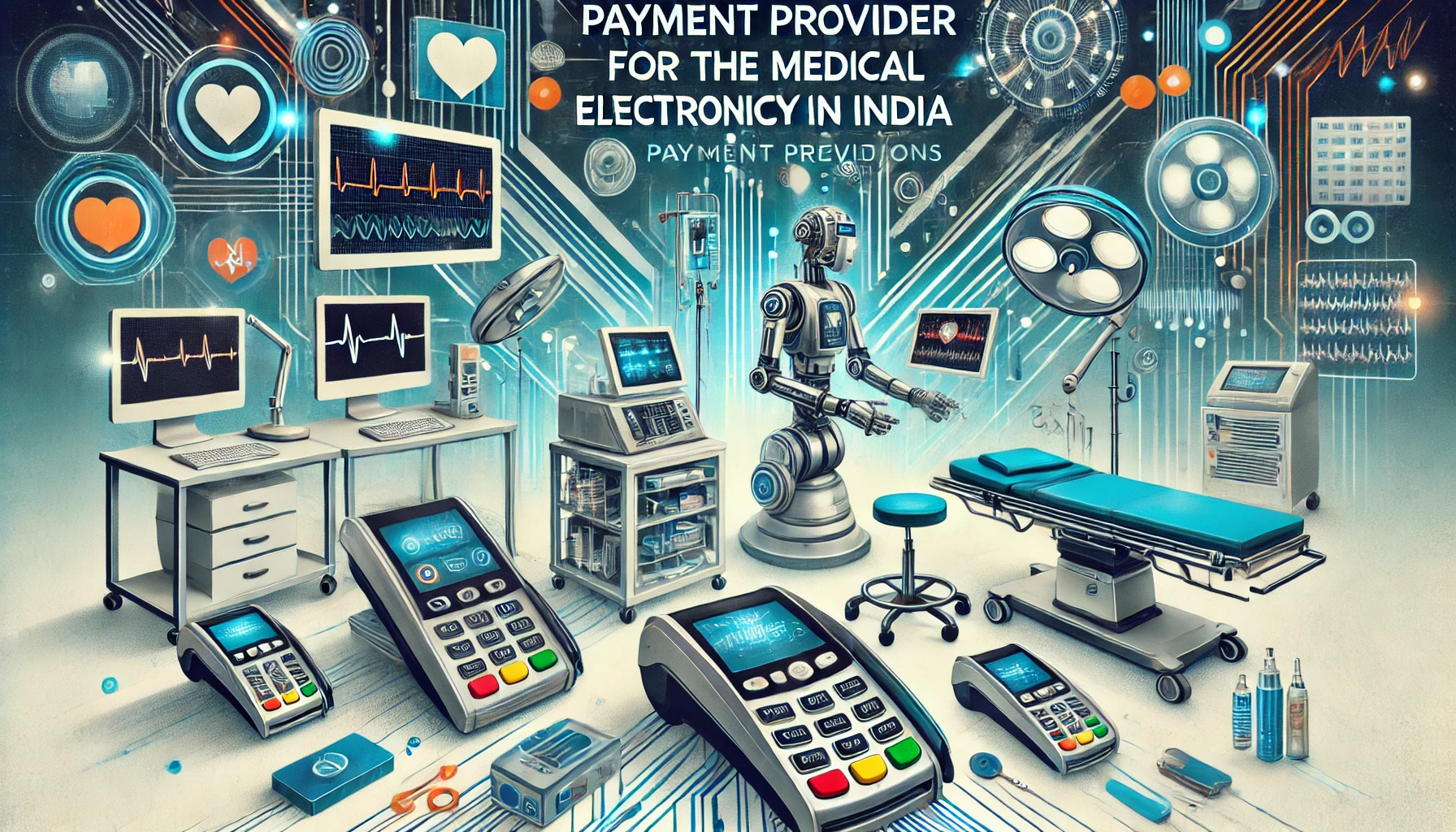AUTHOR : ISTELLA ISSO
Introduction
The medical electronics industry in India has grown exponentially, driven by advancements in healthcare technology and the increasing demand for modern medical devices. From diagnostic equipment to wearable health monitors, this sector is a cornerstone of the nation’s healthcare infrastructure.
Growth of Medical Electronics in India

The growth of medical electronics in India has been remarkable, driven by advancements in technology and increasing healthcare demands. Government initiatives like “Make in India” and the rise of domestic manufacturing have fueled the sector’s expansion. Innovations in AI, IoT, and telemedicine not only enhance its potential but also significantly transform the industry, thereby making healthcare more accessible and efficient.
Key Challenges in the Industry
The medical electronics industry in India faces challenges like high costs of advanced equipment, limited access to financing for smaller healthcare providers, and a lack of standardization in technology. Additionally, regulatory compliance and maintaining data security are not only significant hurdles but also critical challenges that directly impact the sector’s growth and overall development..
The Role of Payment Providers in the Medical Sector
Importance of Seamless Payment Systems
Seamless payment systems are crucial for ensuring a smooth and efficient healthcare experience. They reduce payment delays, improve transaction accuracy, and enhance overall operational efficiency. Payment Provider Medical By simplifying payment processes, they not only save time for both patients and providers but also contribute to a better, more convenient healthcare journey.
Types of Payment Solutions Used in Healthcare
Healthcare providers in India use a variety of payment solutions, including digital wallets, UPI (Unified Payments Interface), credit and debit cards, and online bank transfers. Furthermore, subscription-based payments and EMIs (Equated Monthly Installments) are also popular options for purchasing expensive medical devices. Electronics for Medicine[1] Together, these solutions not only offer convenience but also provide flexibility for both patients and providers, ensuring smoother financial transactions in the healthcare ecosystem.
Emerging Trends in Payment Solutions for Medical Electronics
Digital Payment Revolution
The digital payment revolution has transformed India’s healthcare industry, making transactions faster and more convenient. With the rise of UPI, mobile wallets like Paytm, and apps like Google Pay, patients and providers can easily manage payments. Medical equipment[2] This shift enhances accessibility and streamlines billing processes in hospitals and clinics.
Integration with IoT Devices in Healthcare
The integration of IoT devices in healthcare is revolutionizing payment systems by enabling real-time transactions and subscriptions. Smart devices like wearable health monitors and connected Medical Equipment[3] can process automated payments for services or updates. This innovation ensures efficiency and seamless management for providers and patients alike.
Challenges Faced by Payment Providers in the Medical Sector
Regulatory and Compliance Issues
Regulatory and compliance issues pose significant challenges for Payment service provider[4] in India’s healthcare sector. Strict regulations, such as those under the Data Protection Bill, not only require robust systems to safeguard sensitive patient and financial data but also demand continuous monitoring and compliance efforts. Moreover, navigating these rules while simultaneously ensuring seamless operations can be both complex and resource-intensive, posing significant challenges for organizations in the sector.
Security and Data Privacy Concerns
Security and data privacy concerns are critical in the healthcare payment sector, as sensitive patient information is often involved. Payment providers must implement strong encryption and secure data storage practices to prevent breaches. Medical device manufacturers[5] Ensuring compliance with data protection regulations is essential to maintain patient trust and avoid legal consequences.
The Impact of Payment Providers on Medical Electronics

Enhancing Accessibility to Medical Devices
Enhancing accessibility to medical devices, for instance, is made possible through payment providers offering flexible financing options like installment plans and leasing. In turn, these solutions reduce the financial burden on patients, thereby allowing them to afford expensive medical equipment more easily.Additionally, they enable healthcare providers to access cutting-edge technology, ultimately improving patient care and treatment outcomes.
Improving Patient Satisfaction
Improving patient satisfaction is achieved through seamless and convenient payment solutions that reduce financial stress. By offering flexible payment options and ensuring secure transactions, payment providers enhance the overall healthcare experience. This leads to greater patient trust, satisfaction, and long-term loyalty to healthcare providers.
Popular Payment Providers Catering to the Industry
Domestic Payment Solutions
Popular payment providers catering to the healthcare industry in India include domestic solutions like Razorpay, Paytm, and PhonePe, which offer easy integration with hospital billing systems. Global players like Stripe and PayPal are also expanding their services in India, thereby providing advanced payment processing solutions for healthcare providers and patients. In addition, their entry into the market enhances the overall payment infrastructure, offering greater efficiency and security for all parties involved.
Global Payment Providers Entering the Market
Global payment providers like Stripe, PayPal, and Square are increasingly entering the Indian healthcare market, offering advanced and secure payment solutions. These providers bring international expertise, enabling smoother cross-border transactions and enhancing the digital payment experience for healthcare businesses and patients. Their entry helps drive innovation and efficiency in the sector.
Future Prospects of Payment Systems in Medical Electronics
Adoption of Blockchain for Secure Payments
The adoption of blockchain technology in healthcare payments offers enhanced security and transparency. By providing tamper-proof transaction records, blockchain ensures that patient data and payment details remain secure. This technology also reduces fraud and simplifies the reconciliation process, making payments more efficient and trustworthy for both providers and patients.
AI and Machine Learning in Payment Systems
AI and machine learning are transforming payment systems in healthcare by enabling faster fraud detection, personalized payment solutions, and predictive analytics. These technologies analyze transaction patterns to identify anomalies, improving security. Additionally, AI-driven systems can optimize payment processing, ensuring smoother and more efficient experiences for both healthcare providers and patients.
Case Studies and Success Stories

Hospitals Using Advanced Payment Systems
Many hospitals in India are adopting advanced payment systems to streamline billing and improve patient convenience. By integrating digital payment options like UPI, mobile wallets, and card payments, these hospitals reduce transaction times and enhance the overall experience. Some are even offering financing solutions, such as EMI options, to make medical services more affordable for patients
Role of Payment Providers in Expanding Healthcare Access
Payment providers play a crucial role in expanding healthcare access by offering flexible and secure payment solutions. By enabling options like digital wallets, UPI, and EMIs, they make healthcare services more affordable and accessible for patients. Additionally, these providers streamline transactions for healthcare providers, improving overall efficiency and ensuring that essential medical care reaches more people.
How Payment Providers Address Market Challenges
Building Partnerships with Healthcare Providers
Building partnerships with healthcare providers is essential for payment providers to create seamless, integrated payment solutions. By collaborating closely with healthcare institutions, they can tailor payment systems to meet the specific needs of patients and providers. These partnerships also foster trust, ensuring smoother transactions and enhancing the overall healthcare experience for all parties involved.
Ensuring Scalability and Flexibility
Ensuring scalability and flexibility is vital for payment providers to accommodate the growing demands of the healthcare sector. By offering customizable payment solutions, they can adapt to various healthcare models, from small clinics to large hospitals. This scalability allows providers to efficiently handle increased transaction volumes while maintaining a seamless experience for both patients and healthcare professionals.
Conclusion
The synergy between payment providers and the medical electronics industry is reshaping India’s healthcare landscape. By integrating advanced payment systems, healthcare providers can offer better services, enhance patient satisfaction, and overcome financial hurdles.
FAQs
- What are the main benefits of integrating payment solutions in the medical electronics industry?
Seamless payment systems improve accessibility, reduce costs, and enhance patient experience. - Which payment providers are most popular in India’s medical sector?
Domestic providers like Razorpay and Paytm are widely used, along with global players like Stripe. - How do payment systems enhance patient satisfaction?
Quick and secure payment options reduce wait times and simplify billing, improving patient experience. - What are the challenges in implementing payment systems in healthcare?
Regulatory compliance, data security, and integration with existing systems are significant challenges. - What is the future of payment solutions in the medical electronics industry?
Blockchain and AI-powered payment systems are expected to dominate, ensuring transparency and efficiency.

